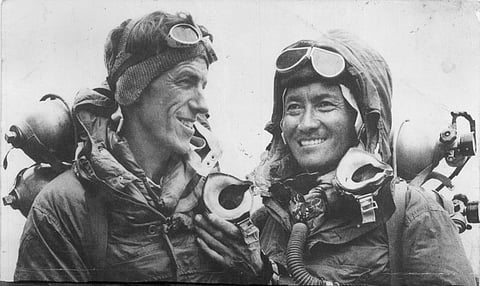The gentle adventurers
To say that someone is a 'Southasian' is, in Himal's lexicon, a complement of the highest order. And that is not intended to imply any racial or regional chauvinism – it's just an idea that the values of Southasian-ness, beyond nation-statism, imply confidence, competence, commitment, empathy and an evolved ability for self-deprecation.
Edmund Hillary, who died on 11 January, was a Southasian. Of course, he became nominally a Southasian when he was granted honorary Nepali citizenship in 2003. But he was a Southasian well before that as well, due to his seeking to understand the Himalaya and its people, due to his coming forth to help without fanfare and without seeking applause. Indeed, he later said that his proudest accomplishment had not been climbing Everest ("We knocked the bastard off!"), but rather what he did to help the Sherpa community in his decades after the ascent.

